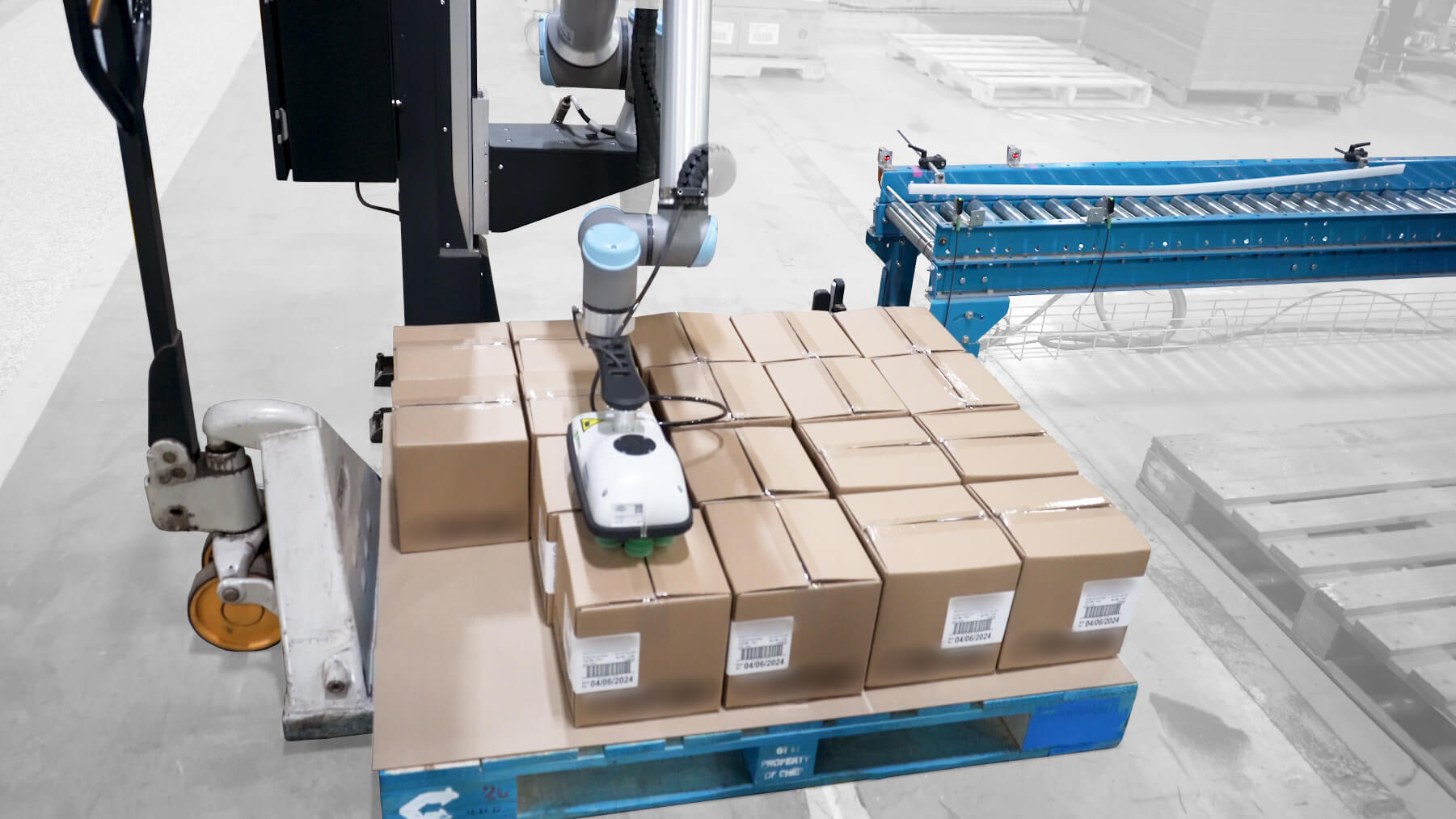Palletizing Pallet Pattern Charts Explained with Images
Whether you are manually palletizing or using an automated system, you want to ensure you're using the right palletizing pattern as it helps you package your products securely, reducing damage and returns. If you wonder what a palletizing pattern is, it's essentially a visual representation of the most optimized arrangement of products on a pallet that maximizes space utilization and ensures load stability.

Whether you are manually palletizing or using an automated system, you want to ensure you're using the right palletizing pattern as it helps you package your products securely, reducing damage and returns. If you wonder what a palletizing pattern is, it's essentially a visual representation of the most optimized arrangement of products on a pallet that maximizes space utilization and ensures load stability.
How to calculate how many boxes will fit in a pallet?
To calculate how many boxes will fit on a pallet, consider the carton dimensions, cardboard type, and the number of cases in the unit load. The first rule is usually to place as many cases on a layer as possible, without any overhang unless it is inevitable and accepted by the manufacturer's customer. To maximize stability, interlocking patterns are used between the different pallet layers. However, the same pallet configuration (column stacking pattern) is used if the cases are large (and stable) and if the main constraint is the load capacity of each case (the load can be higher if the pressure is transmitted on all case edges). The number of layers is determined to match either the pallet load capacity, the maximum unit load height (racking or ergonomic constraints) or the number of cartons the customer needs per unit load.
Palletizing Pattern Charts
There are several pallet patterns you can choose, in this section we present you 7 pallet load configurations that we considered optimal.
 1. The interlocked pattern
1. The interlocked pattern
When stacking containers in a vertical arrangement, one difficulty is preserving the loads during transportation. As a result, many people use an interlocking pattern which "locks" the containers in place by staggering their positions.
This pattern is perfect for products that you need to stack securely. It is often used for heavier loads.
2. The partially interlocked pattern
In the partially interlocked pattern, sme boxes overlap, but not all. It's composed of a base layer plus an interlocked top layer that's joined by columns. When compared to a totally interlocked structure, this improves the strength of each vertically aligned layer by up to 45%. Partially interlocked patterns are best for lighter loads and products that don't require as much stability.3. The block or split block pattern
 The Block Pattern represents a pallet pattern of column arrangement. Each box are stacked on top of the one below it in the same sequence. This method works for certain items, but lack of interlocking may cause them to fall. It all depends on what you're palletizing.
The Block Pattern represents a pallet pattern of column arrangement. Each box are stacked on top of the one below it in the same sequence. This method works for certain items, but lack of interlocking may cause them to fall. It all depends on what you're palletizing.
A variation of this pattern is the split block, which involves dividing the pallet into two sections. The first section is a central column of boxes that hold all containers together. Around this column is the second section, where the boxes are stacked on top of each other, as with the block pattern.
This is useful for products of different sizes because it prevents them from toppling over.
4. The brick pattern
With The Brick Pattern, you don't stack the cartons in the same way as you would with a column arrangement. Rather, you stack them one on top of another, alternating between layers, like a brick wall.
One disadvantage of this approach is that it unevenly distributes the weight at the weakest point of each carton. We don't recommend using this method for heavy loads because it puts too much stress on the bottom layer.
5. The row or split row pattern
 This is like The Brick Pattern, but we turn each layer 90 degrees compared to the one below it. It provides extra interlocking for stability, but it's not as complicated as The Pinwheel Pattern (see below).
This is like The Brick Pattern, but we turn each layer 90 degrees compared to the one below it. It provides extra interlocking for stability, but it's not as complicated as The Pinwheel Pattern (see below).
The Split Row is a variation of this pattern which provides some extra stability. With a split row, you have a standard row design, but you place one box in a different orientation in each row to lock the rest in place.
This is useful for products of different sizes because it prevents them from toppling over.
6. The pinwheel pattern
 A pinwheel is an interlocking pattern with some gaps, forming the boxes in the shape of a wheel.
A pinwheel is an interlocking pattern with some gaps, forming the boxes in the shape of a wheel.
You can use this type of pattern when the product has a tendency to shift during transportation. The gaps between the boxes allow for some movement, which can be beneficial depending on what you're palletizing.
It's also useful for products of different sizes because it prevents them from toppling over.
 7. The column stacked pattern
7. The column stacked pattern
Column stacking increases box stability by 25-30%. It evenly disperses the weight over each box's strongest point.
One problem with this approach is that it relies on ties or shrink wrap for stability – the structure itself doesn't provide any stability. They are the only thing keeping boxes from tumbling in transit since all boxes are directly on top of each other.
The path to success with palletizing is to plan. Experiment with various pallet layouts and see how they perform. If you have heavy boxes, you'll want to use a pattern that offers extra support, like the interlocked or pinwheel patterns. The size of the boxes is also important. If you're palletizing large boxes, you'll need a pattern that can accommodate them without sacrificing stability.
Finally, consider the contents of the boxes. If you're palletizing fragile items, you'll want to minimize movement to prevent damage. Here, for example, a pinwheel pattern might not be the best choice. Don't believe that you can simply set up your palletizing task once and leave it. You may need to alter your pallet patterns over time, allowing for continuous improvement.
How robots can help with palletizing
Robots have long been used for palletizing in large manufacturing companies to optimize the shipment process. These companies benefit from the consistent motions of palletizing robots, which save valuable seconds per pallet, leading to significant efficiency gains due to high shipment volumes.
For smaller companies or those with varied products, robotic palletizing is relatively new. Recently, collaborative robots (cobots) have made it possible for almost anyone to benefit from robotic palletizing.
Cobots enhance shipment efficiency through:
- Consistency: Cobots perform the same task consistently, ensuring boxes are always placed correctly on the pallet and at a consistent speed.
- Accuracy: Cobots place boxes with precise angles, maintaining accuracy throughout the process.
- Ease of programming: Cobots are easy to program, allowing even those who usually perform palletizing tasks to program them, making them flexible for changes in product lines.
Using automated palletizing solutions can significantly optimize your palletizing tasks and expedite your shipments.
![]()





.png?width=975&height=195&name=Hack%20AG%20banner%20(1).png)










